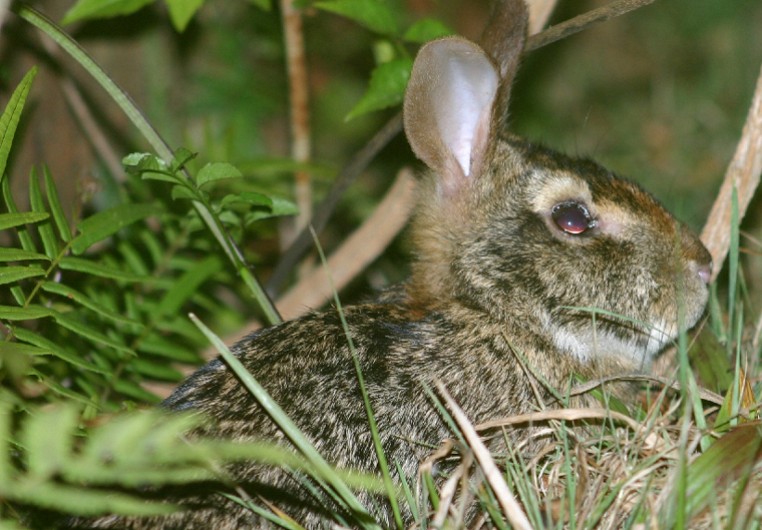Biodiversity
 Forest Rabbit
Sylvilagus brasiliensis | Linnaeus, 1758
Forest Rabbit
Sylvilagus brasiliensis | Linnaeus, 1758

Characteristics: This animal measures 21-40 centimeters in length and weighs 0.95 to 1.2 kilograms. It has a short, soft coat, which is dark, mixed with black and brown on its back. Reddish neck and front paws. This rabbit has long ears, a flexible nose, big eyes, and a very short tail shaped as a pompom that is brown on the top and pale on the bottom. Additionally, it is white on the bottom. It has long, four-fingered hind paws, while its upper paws have five fingers.
Distribution: The Forest Rabbit is found everywhere from Mexico to Northern Argentina, occurring nearly everywhere in Brazil, especially in the Midwest, Southeast, and east of the Northeast.
Habitat: It is seen most commonly at night, in lawns near houses, gardens, and crops. It frequents the edges of dense forests, and may be found in marshes and riverbanks.
Habits: This is a nocturnal, terrestrial animal with solitary habits. When frightened, it seeks shelter in dense vegetation, where it spends the day. It is very agile and can run at high speeds, an important means of defense. During the day, it hides in holes or burrows it digs itself, and it has a reduced area of action.
Diet: It feeds on bark, buds, and on the stalks of many types of plants.
Breeding: The gestation period is approximately 30 days, and there may be two litters per year, each with two to seven pups, which are born with eyes shut tight, bare, and fully dependent.
In the UFRA area: This small rodent was only found in Wetlands with Riparian Forests and in remaining native forests. It is considered rare in these farms and in nature in general.



